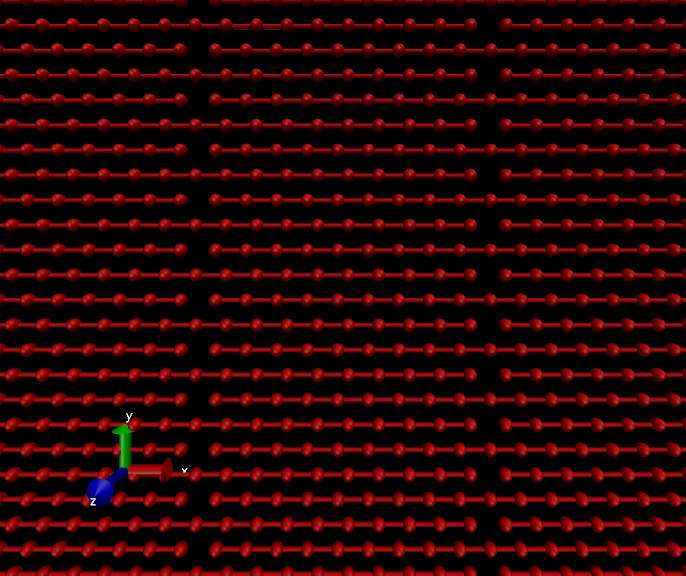Dear LAMMPS users,
I know that my question is not directly related to LAMMPS itself,
i'm sorry if I take your time reading that. But I also believe
that somebody else can also learn from answers to it.
I'm building a relaxed 2D configuration of FENE polymer.
my initial configuration is something like (LJ units, periodic bc):
---- ---- ---- ----
---- ----- ---- ----
---- ---- ---- ----
and so on
the distance between bonded atoms is 0.97 (roughly equilibrium of FENE bond),
the distance between polymers (both in X and Y) is 2^(1/6) (equilibrium of LJ-12-6)
some part of my input script is :
pair_style lj/cut 2.5
...
velocity all create 1.0 1231
fix 1 all nve
fix 2 all langevin 1.0 1.0 1.0 904297
fix 3 all enforce2d
...
timestep 0.0001
If I use:
pair_coeff 1 1 1.0 2.0 2.5
I have "FENE bond too long" warning followed by Error at some point.
But if I decrease cut-off distance for LJ to, say, 1.0:
pair_coeff 1 1 1.0 1.0 2.5
(which is basically only repulsive LJ since 1.0<2^(1/6))
then everything is ok, BUT it's not what I really want.
Because when I try to relax pressure with finite temperature
(do NPT with ...iso 0 0 ${pdump} drag 2 )
obviously the whole system flies away
because there are no attractive interactions between chains.
I tried lowering integration timestep (it's quite low already),
but it does not seem to help.
I just don't see an explanation why attractive part of LJ, which is
substantially weaker than FENE, can lead to configurations where FENE
bond is too long?
Of course it should also depend on initial velocity and temperature,
I tried to lower it but it seems it does not have big influence on the problem.
Kind regards,
Denis Davydov
